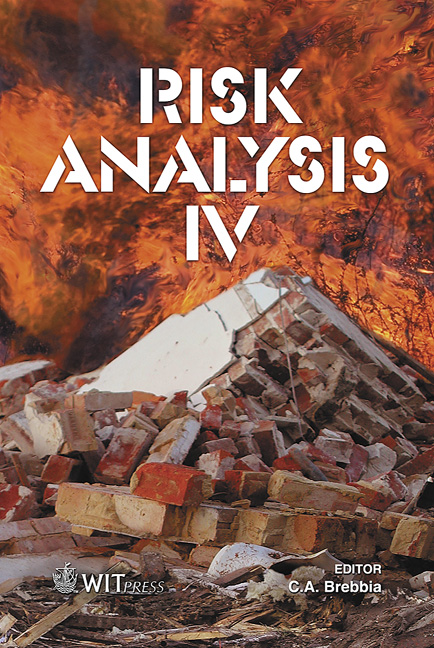Experimental And Numerical Analysis Of Impact Forces On Structures Due To A Granular Flow
Price
Free (open access)
Transaction
Volume
77
Pages
10
Published
2004
Size
1,127 kb
Paper DOI
10.2495/RISK040241
Copyright
WIT Press
Author(s)
L. Montrasio & R. Valentino
Abstract
The paper presents the results of an experimental and numerical analysis aimed to clarify some aspects regarding the impact of a granular flow on structures. The experimental set-up comprises a flume equipped with a system of differently sized model obstacles, which are placed along the run-out trajectory to measure the impact force. The soil used for the small-scale model is a mono-granular medium sand, which was revealed to be particularly suitable the simulation of flows like debris or rock avalanches. The numerical analysis deals with the capability of a DEM code of predicting the experimental evidences. The most significant results of the measured impact forces versus time have been numerically reproduced by a Distinct Element Model (DEM), after the numerical model of the granular flow had been calibrated on the basis of the displacement measurements, obtained through a photogrammetric technique. 1 Introduction The evaluation of the run-out distance of the slide material and of the impact force on structures during the occurrence of fast slope movements, such as rock avalanches or debris flows, still remains a problem of difficult solution. This is due to the inherent complexities of the nature of the material involved, the presence of water and the dynamic character of the process. Reliable methods of prediction of such effects and prevention against natural phenomena are then in great need. For a successful risk analysis in this field, the use of numerical codes as predictive tools is assuming a growing importance. Recent advances in the use of numerical methods based on discontinuum modelling make the simulation of rock slope failure mechanisms and evolutions very appealing and promising. In particular, the Distinct Element Method (DEM)
Keywords





